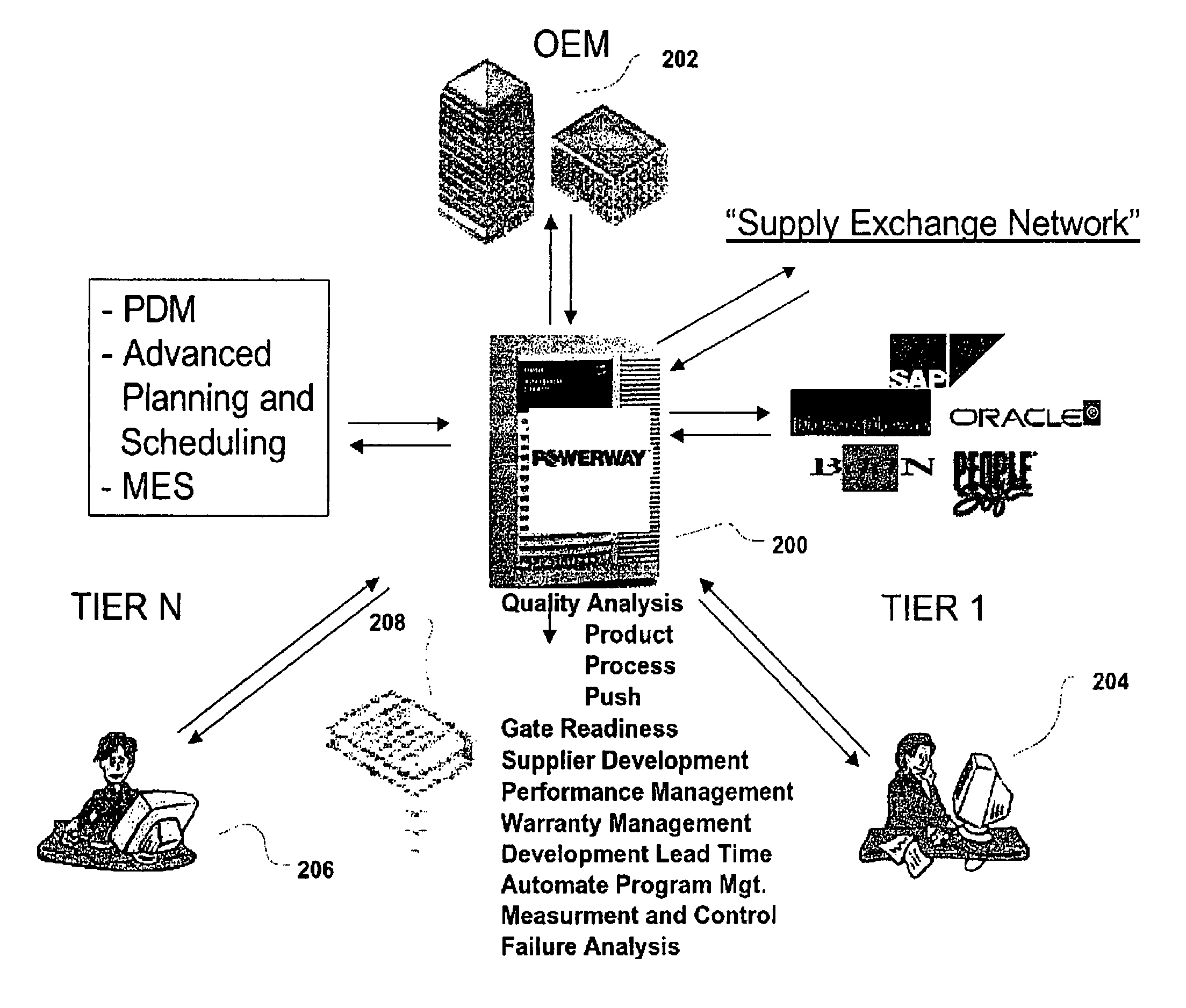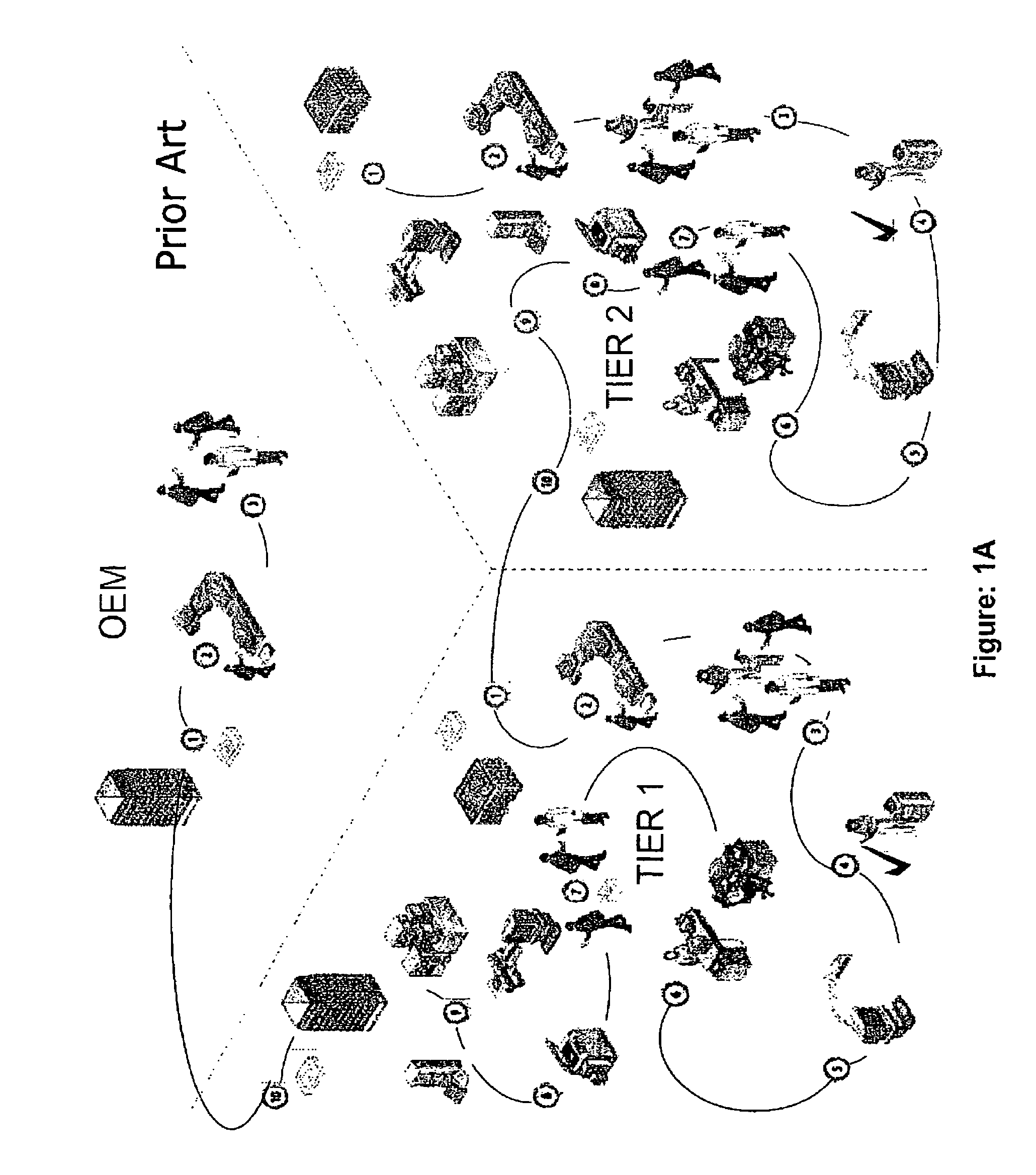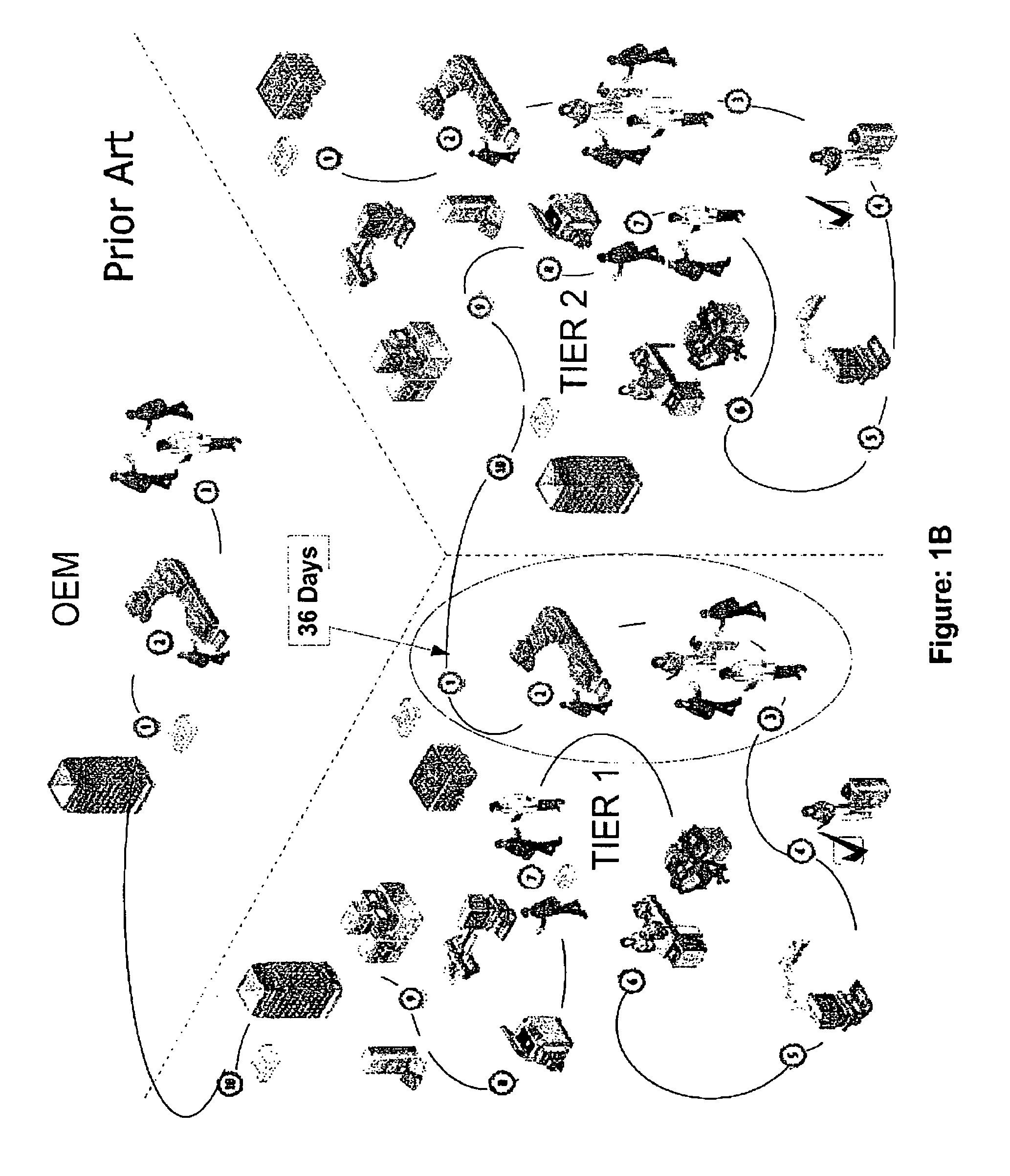Method and system for supply chain product and process development collaboration
- Summary
- Abstract
- Description
- Claims
- Application Information
AI Technical Summary
Benefits of technology
Problems solved by technology
Method used
Image
Examples
example 1
[0368]The DFMEA is identified as a required document throughout the entire project. Tied to the DFMEA are 3 performance goals for phase one: one for % RPNs under 41, one for % safety-related RPNs under 41 and one for % critical characteristic-related RPNs under 41. The total DFMEA score for the project would be the aggregation of all three goals for that document, after any weighting for the individual goals were applied.
example 2
[0369]The DFMEA is identified as a required document throughout the entire project. Tied to the DFMEA is one risk goal: trend RPN values as a function of time. This risk-oriented goal for the DFMEA will drive the DFMEA element's risk rating.
example 3
[0370]The team list is monitored over the course of the project. Even though the methodology has not specified any team-list expectations for the project, high turnover may be a good indicator of project risk. A risk goal is then established for the project that calls for decreasing turnover rates as the project progresses.
[0371]Multiple levels of aggregation may occur for both performance and risk related scoring. In performance scoring, specific indicators are rolled up and are candidates for relative weighting within elements. Elements are further rolled up and are candidates for relative weighting within phases of the project. The phases are then rolled up and are candidates for relative weighting within the entire project. Aggregation within risk scoring is, for the most part, the same as performance scoring. The only exception is that risk is generally not organized into phases; risk exists for the project as a whole across past and future phases.
[0372]Project “Performance” re...
PUM
 Login to View More
Login to View More Abstract
Description
Claims
Application Information
 Login to View More
Login to View More - R&D
- Intellectual Property
- Life Sciences
- Materials
- Tech Scout
- Unparalleled Data Quality
- Higher Quality Content
- 60% Fewer Hallucinations
Browse by: Latest US Patents, China's latest patents, Technical Efficacy Thesaurus, Application Domain, Technology Topic, Popular Technical Reports.
© 2025 PatSnap. All rights reserved.Legal|Privacy policy|Modern Slavery Act Transparency Statement|Sitemap|About US| Contact US: help@patsnap.com



